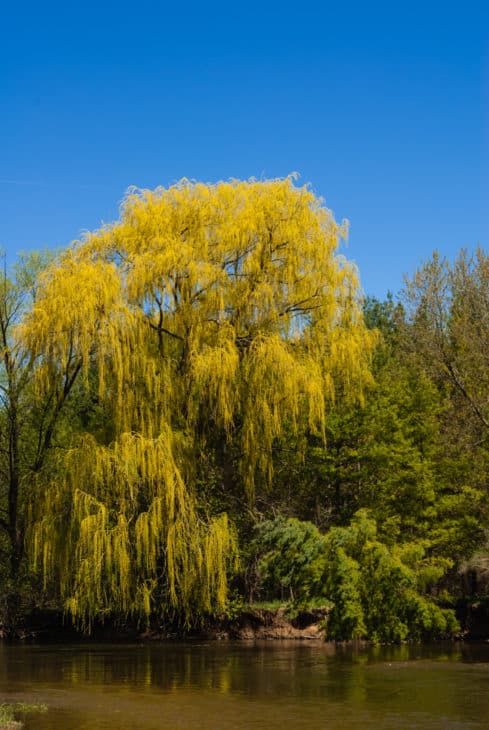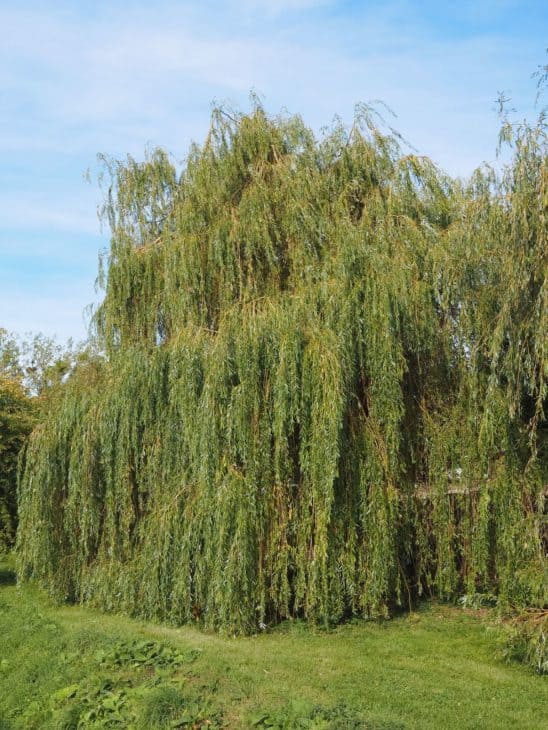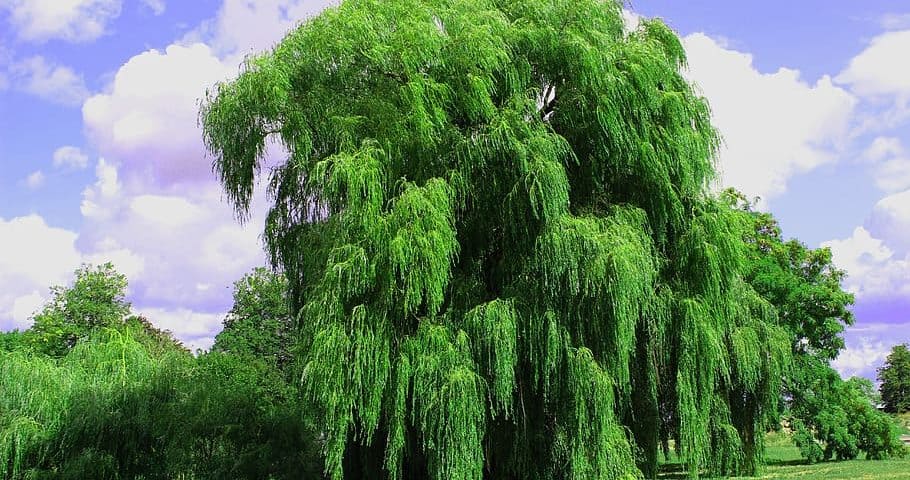Weeping Willows are popular in gardens as they add a sense of fantasy where you plant them. These trees are increasing in popularity as more people choose to plant them around their homes. But what are the pros and cons of Weeping Willow trees that you should know before buying one for your garden?
Weeping Willow trees have a few pros and cons, including their beautiful appearance, their ability to grow fast, and that these trees are easy to care for. However, these trees have invasive root systems, are prone to certain diseases and pests, and are messy, to name a few pros and cons.
Pros Of Weeping Willow Trees
Weeping Willow trees are stunning trees that are becoming more popular in gardens due to many great reasons. So, let’s go through all the pros around Weeping Willow trees that are increasing their popularity.

1. Weeping Willow Trees Are Beautiful
Weeping Willow trees are gorgeous trees that can make your garden look like a fairy-tale forest if you are lucky enough to have one or two in your garden. These trees have lovely low-hanging branches with long leaves that hang down, creating a fairy-tale atmosphere.
These trees bring beauty and grace to gardens that no other tree can offer. These trees also have a stunning fall look, as their leaves turn a bright orange color that will catch your eye every time you walk out into your garden.
2. Weeping Willow Trees Grow Fast
Weeping Willow trees are fast-growing trees; they are considered one of the fastest-growing trees you can buy. You can expect about 3 to 4 feet of growth every year when you plant a Weeping Willow in your garden.
This tree will ensure you have a good amount of privacy in your garden faster than other trees can. These trees are also the last to lose their leaves in winter, so you will have this privacy in your garden for most of the year.
3. Weeping Willow Trees Are Easy To Care For
Weeping Willow trees are relatively easy to care for as long as you plant them close to a water source. Weeping Willow trees can easily adapt to various acidity levels in the soil, so there is no need to worry about the soil’s pH levels.
These trees prefer full sun conditions, so you can plant them in a hot environment without worrying about them. Weeping Willow trees can also thrive in soggy soil, and they are hardy to cold temperatures. So, these trees can grow in almost any environment, making them very easy to care for.
4. Weeping Willow Trees Offer Great Shade
As Weeping Willow trees grow fast and have lovely long branches with thick leaf coverage, these trees create a good amount of shade in your garden. They can create shade over a fast area of your garden if they are big enough.
This can make a lovely place in your garden to place a table where you can sit and have tea and read a book or a place to have picnics with your family and friends, without being in the sun all day and possibly getting a sunburn.
5. Weeping Willow Trees Make For Great Wind Breaks
Due to the size, shape, and foliage of the Weeping Willow tree, the tree can be an excellent windbreak. If your home or property is victim to fast, strong winds and cold drafts, then planting a Weeping Willow in your garden will help protect your house or property from any damage that these strong winds and drafts can cause.
Planting a Weeping Willow tree as a windbreak can help protect your property from debris brought in by the wind, and the tree will help reduce any snowdrift from forming around your property.
Cons Of Weeping Willow Trees
Although Weeping Willow trees are beautiful trees and have many great things to offer, these trees do have some cons that you should be aware of before you decide to plant one of them in your garden. Let’s go through the cons associated with Weeping Willow trees.

1. Weeping Willow Trees Have Invasive Roots
Unfortunately, one of the biggest downsides to Weeping Willow trees is their roots. The roots of these trees are extremely invasive and can cause a lot of damage to building foundations, sidewalks, septic systems, and the water pipes that lead to your home.
Weeping Willow trees love water, and they will actively seek it out. They will break water pipes and clog them to ensure they receive the water they need. This could leave you home without water until you can fix the pipes. So, you need to ensure you plant them far away from any form of infrastructure.
2. Weeping Willow Trees Have A Short Life Span
One major downside to weeping willow trees is their relatively short life spans. Unfortunately, Weeping Willow trees will only live for about 50 years and not much longer. This is a problem for some people as you may plant the tree for a specific reason, like privacy, but you won’t have it anymore when the tree dies.
Weeping Willow trees can be expensive to cut down after they have died, and they can be expensive to replace too.
3. Weeping Willows Are Prone To Pests And Diseases
Weeping Willows are prone to pest infestations and disease due to the environment they create under their long, low-hanging branches. These pests and diseases can cause significant damage to the Weeping Willow tree and could even kill it if not treated soon enough.
The main diseases that these trees could face include bacterial blight, black canker, and tarspot fungus, to name a few. The main pest that could attack the Weeping Willow tree is gypsy moths. All these need to be treated as soon as you spot them, or they will kill the tree.
4. Weeping Willows Are Messy Trees
Weeping Willow trees are pretty messy, and you will need to clean up around them almost daily. Weeping Willows are known for dropping twigs and leaves everywhere. You will need to pick these up whenever you want to do garden maintenance that requires machinery, like mowing the lawn.
This can become annoying after a while as you will need to clean regularly, and these twigs and leaves can fall into your pool if you have one and clog your pool’s pump.







